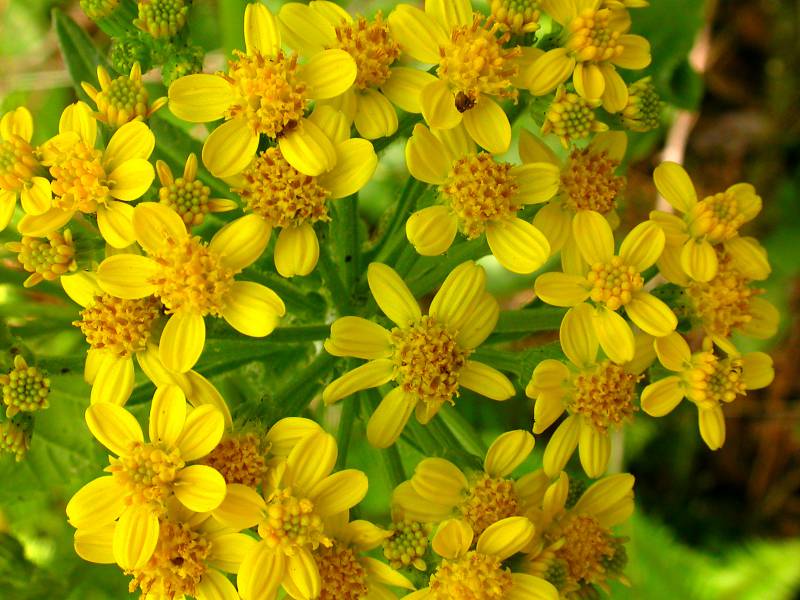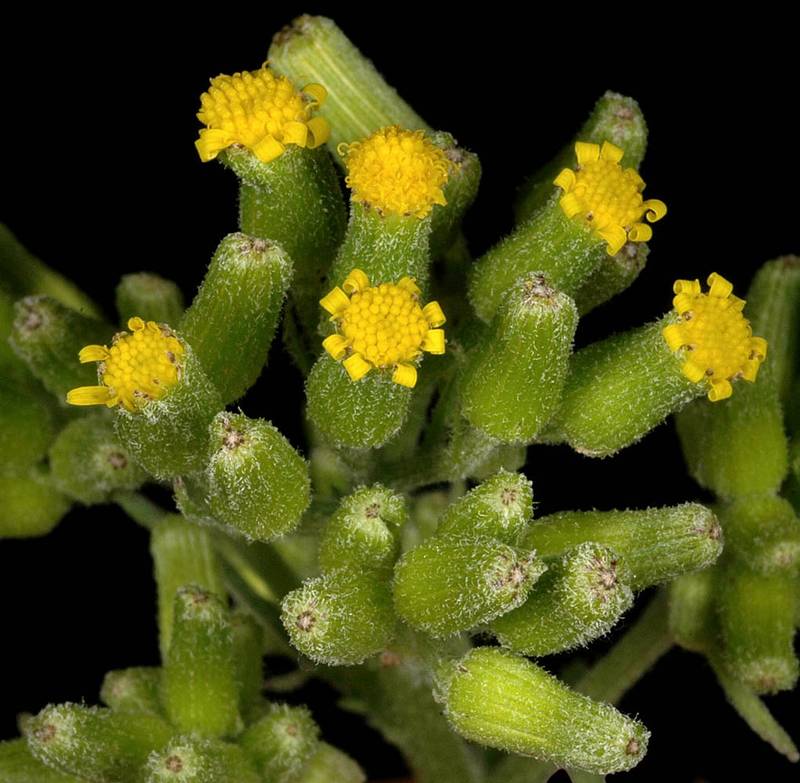Senecio integerrimus
Senecio sylvaticus
one-stemmed butterweed, western groundsel
wood groundsel, woodland groundsel, woodland ragwort
Usually entire, elliptic to broadly lanceolate, the basal ones petiolate, the blade and petiole 6-25 cm. long and 1-6 cm wide;
cauline leaves progressively reduced upward, becoming sessile toward the top of the stem.
Leafy throughout, the leaves more or less pinnatifid and irregularly toothed, 2-12 cm. long and 4-40 mm. wide, narrowly lanceolate in outline.
Heads several to numerous in a rather congested inflorescence;
involucre 5-10 mm. long;
rays 6-15 mm. long, usually yellow, occasionally cream.
Senecio integerrimus
Senecio sylvaticus
Occurring chiefly east of the Cascades crest in Washington, where widely distributed; British Columbia to California, east to the Great Plains and Great Lakes region.
Occurring chiefly west of the Cascades crest in Washington; British Columbia to California, also in eastern North America.
- Local floras:
BC,
CA,
OR,
WA
- Local Web sites:
CalFlora,
CalPhotos,
Flora NW,
PNW Herbaria,
Turner Photog.
WildflowerSearch
iNaturalist (observations)
USDA Plants Database
- LBJ Wildflower Center
- SEINet
- Plants of the World Online
- Encyclopedia of Life
- Wikipedia
- Google Image Search
- Local floras:
BC,
CA,
OR,
WA
- Local Web sites:
CalFlora,
CalPhotos,
Flora NW,
PNW Herbaria
WildflowerSearch
iNaturalist (observations)
USDA Plants Database
- LBJ Wildflower Center
- SEINet
- Plants of the World Online
- Encyclopedia of Life
- Wikipedia
- Google Image Search



